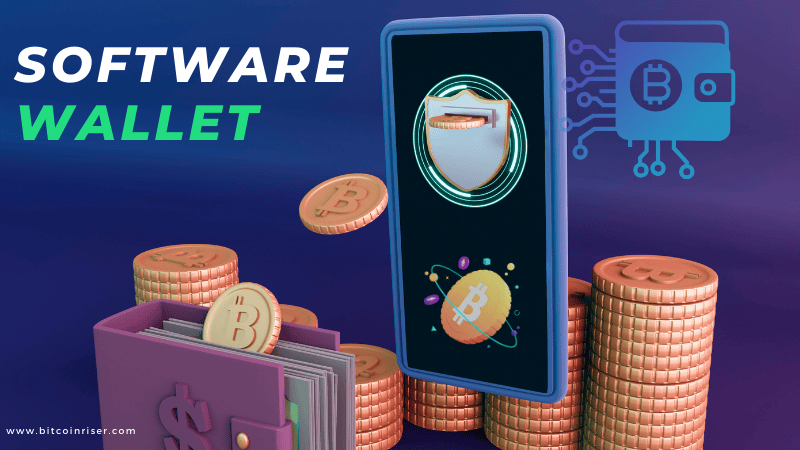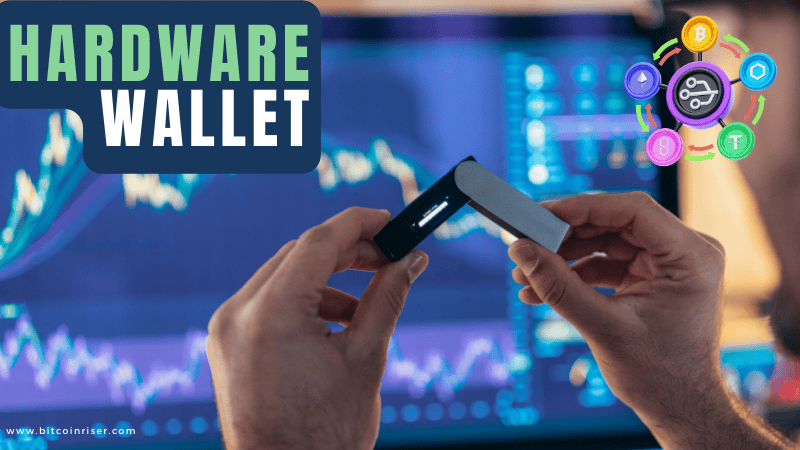Bitcoin wallet security remains essential in today's evolving cryptocurrency environment. The continuous growth of Bitcoin's value and rising popularity have led to enhanced threats against digital assets. Protecting your Bitcoin wallet requires a complete guide that includes detailed steps and optimal security practices to fight against hacking scams and other vulnerabilities. This guide comprehensively covers essential wallet security principles and advanced protection strategies to safeguard your crypto assets.
To establish Bitcoin wallet security, you must first comprehend what it represents and why it needs protection. A Bitcoin wallet is a digital tool that lets you store and transfer BTC and receive payments. Your Bitcoin network access point is the primary point of attack for hackers because they desire your cryptocurrency.
The many available Bitcoin wallets feature separate security attributes and specific vulnerabilities. Three major types of Bitcoin wallets exist today.
The choice between Bitcoin wallets depends on user requirements, the Bitcoin amount, and preferred security standards.
Software wallets are applications that users can install on their computers or smartphones. Crypto users choose software wallets because they strike a good balance between ease of use and safeguarding their Bitcoin holdings.

Hardware wallets are devices built to manage cryptocurrency private keys while operating offline. They are among the most secure ways to store crypto keys and are incredibly efficient for long-term and substantial cryptocurrency amounts.

Learn more about hardware wallet in this article: Crypto Hardware Wallets: The Ultimate Guide to Secure Your Digital Assets
Paper wallets involve physically storing private keys printed on paper documents to create a form of cold storage. You can store your keys offline through paper wallets but must handle them correctly for protection.

Cryptocurrency security experts choose hardware wallets as the best method to protect their Bitcoin savings since these devices involve maximum safety for long-term storage and substantial cryptocurrency holdings. Your hardware wallet will achieve maximum security through the following best practices:
Choosing Secure Brands
Selecting a hardware wallet requires picking trusted brands that demonstrate strong security credentials. The most established brands producing hardware wallets consist of:
Updating the firmware on your hardware wallet is essential for maintaining its security capabilities. Security updates and new features in firmware updates defend hardware wallets by blocking vulnerabilities.
Digital security offered by hardware wallets depends significantly on securing your device from physical threats.
Multi-signature wallets increase Bitcoin security because they need at least two private keys to verify transactions. A 2-of-3 multi-sig wallet functions by requiring two keys out of the three available to approve, thus decreasing unauthorized transaction risks.
These wallets prevent lone vulnerability points while fighting internal fraud because they are suitable for shared accounts and business partnerships. Setting up a multi-sig wallet involves selecting providers from Ledger or Trezor, deciding on key-sharing methods, and creating data security protocols and emergency retrieval processes. Users who require comprehensive security for their Bitcoin wealth can feel safer using the additional complexity that multi-sig wallets offer.
Every Bitcoin wallet requires a seed phrase for protection, which comprises either 12, 18, or 24 specific words. The seed phrase enables you to restore your funds should your wallet be misplaced or physically damaged. Protecting your seed phrase remains essential because anyone accessing it can gain control of your Bitcoin storage.
Best practices for seed phrase protection involve writing it down on rigid materials instead of digital storage and selecting safe storage locations. Storage standards should be checked regularly while learning about potential risks for your assets. Your seed phrase requires maximum attention because it is key to accessing your digital assets.
Any suspicion of hacking attempts against Bitcoin wallets should prompt quick action. First, you must maintain composure while determining what occurred. Then, disconnect your device from the internet and perform antivirus scans to check for viruses. Finally, you must change all linked account passwords and inform your wallet management service.
Any remaining funds must be quickly transferred to safe wallet storage now. Local authorities need to be notified about the incident, and you also need to document evidence as a foundation for recovery attempts.
You should seek legal help and blockchain forensic analysis to track the missing funds for better results. Online security improves if people employ hardware wallets with two-factor authentication, which requires software updates. Fast actions combined with detailed documentation help reduce financial losses in such incidents.
The process of recovering your Bitcoin wallet presents itself after system loss, although it requires carefulness in obtaining replacement stored information. You can recover wallet access through seed phrase restoration on applications that match your wallet software.
The presence of backups allows you to search for the file before importing it. When dealing with encrypted wallets, use Hashcat as the last possible option for password recovery.
Consistent data backups, secure seed phrase storage, and cold storage solutions can avoid future wallet data losses. You should implement multiple backup systems while also protecting their physical locations.
Users should protect their wallets through hardware storage, multiple signature authorizations, enhanced authentication systems, and complex account passwords. They should also be aware of current security dangers to prevent threats effectively.

Bitcoin users remain at risk due to phishing scams that try to steal their sensitive information through trickery.
Crypto users regularly encounter three scams: phishing emails, deceptive websites, and social media impersonation.
To detect phishing attempts, you should inspect for unusual URLs, grammar mistakes, and unexpected information requests. Security improves through 2FA authentication because users must confirm their identity with a second verification method between authenticator apps or hardware tokens.
Official website communication verification with bookmarks, software maintenance, unique passwords, and proper site address confirmation enables users to avoid scams effectively. Exercise caution when dealing with investment opportunities while verifying the destination address before performing transactions.
Learn more about crypto Phishing & Scams in this article: Crypto Scams: Biggest Bitcoin Ponzi Schemes & How to Avoid Them
The security of your cryptocurrency wallet demands attention even though crypto crimes are decreasing because your digital assets require protection. Individual users face new threats from scams and hacking techniques that persist without interruption.
The best approach to safeguarding your assets includes selecting proper wallets, using robust passwords, enabling dual-factor authentication, keeping private keys separate from the network, and keeping all software updated.
The crypto wallet security space is constantly evolving, and new developments are providing stronger protection methods such as biometric authentication, secure multiparty computation (SMPC), and decentralized identity solutions.